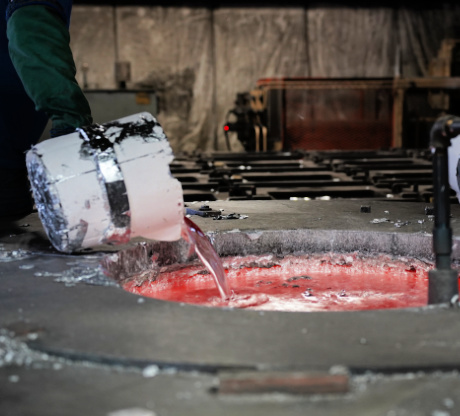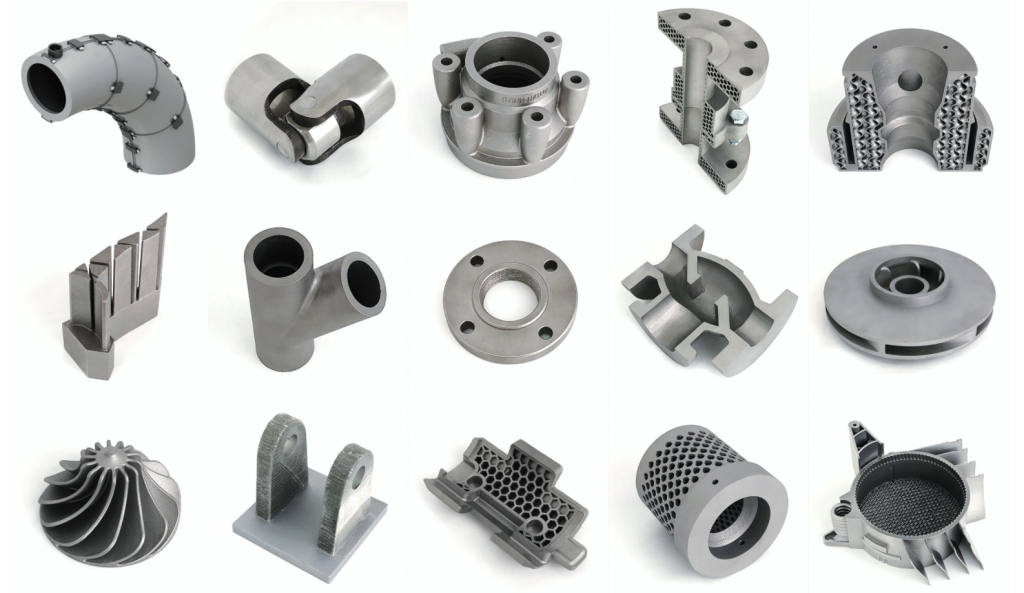Not known Facts About Aluminum Castings Company
Table of ContentsAluminum Castings Company - The FactsThe Best Strategy To Use For Aluminum Castings CompanyTop Guidelines Of Aluminum Castings CompanyThe Only Guide to Aluminum Castings CompanyAn Unbiased View of Aluminum Castings CompanyFacts About Aluminum Castings Company UncoveredGet This Report on Aluminum Castings CompanyAluminum Castings Company Can Be Fun For Anyone
There are two main kinds of die spreading made use of in the light weight aluminum spreading market: warm chamber die spreading and cold chamber die spreading. The main difference between these methods is exactly how the molten metal is supplied to the mold and mildew. In warm chamber die casting, typically utilized for lower melting factor steels, the fusion is straight connected to the machine, and a bettor compels the product via a gooseneck into the die tooth cavity.
Some Known Facts About Aluminum Castings Company.
In these methods, the mold and mildew is purposefully ruined or escaped in order to remove the ended up aluminum spreading. Usual processes under the classification of expendable mold and mildew casting consist of (investment spreading),,, and financial investment casting. When producing customized aluminum components using expendable mold and mildews, makers put liquified light weight aluminum or aluminum alloys right into the mold and mildew, which is after that broken apart to launch the solidified steel part.
The is among the earliest and most utilized types of aluminum casting. It includes condensing specialized foundry sand, frequently enhanced with clay or resin, around a precisely crafted reusable pattern that determines the shape and inner details of the finished light weight aluminum product. The pattern system incorporates risers and vents to handle the circulation of liquified steel and to prevent casting flaws such as contraction porosity.
Some Known Details About Aluminum Castings Company

This mold is then preheated before the putting of liquified aluminum or light weight aluminum alloy. As the steel loads the shell, it records the detailed details and fine surface area finish of the mold and mildew. Once cooled down, the ceramic is mechanically or chemically escaped, permitting the elimination and separation of specific cast parts.
The Basic Principles Of Aluminum Castings Company
Irreversible mold spreading utilizes multiple-use metal mold and mildews and is suitable for mass manufacturing with regular quality and less waste. Expendable mold casting uses single-use mold and mildews, like sand or foam, using layout adaptability and lower tooling expenses for models or short runs. Pass away casting is best for producing high volumes of light weight aluminum parts that call for limited tolerances, great information, and smooth surfaces.
The Toshiba Equipment DC-J Series includes die casting machines suitable for aluminum. Known for their robust construction and high shot efficiency, these equipments make sure efficient and accurate casting (Aluminum Castings Company).

While aluminum can be made use of in its pure type, it is often alloyed with other steels to improve its residential or commercial properties or the properties of the various other steels. Light weight aluminum alloys are categorized into 8 series, numbered from one to eight.
The Aluminum Castings Company Ideas
This alloying boosts the toughness and hardness of aluminum but lowers its ductility and rust resistance. The 2000 series alloys are testing to weld but here can be warmth dealt with to boost their residential properties. The 3000 series alloys are primarily alloyed with manganese. This combination enhances deterioration resistance while offering moderate stamina.
The 4000 series alloys are alloyed with silicon, which lowers the melting factor and enhances fluidness. This makes it a preferred choice for spreading, as it is easy to form in its molten state.
Some Known Factual Statements About Aluminum Castings Company
This series is categorized as a high-strength alloy, specifically suited for sheet and plate applications because of its outstanding weldability. Its resistance to rust from acids and alkalis makes it ideal for usage in extreme and hostile atmospheres (Sand Foundry). The 6000 collection alloys are alloyed with both magnesium and silicon, offering a balance of stamina, mechanical homes, and deterioration resistance
Handling the 6000 series calls for specialized and innovative equipment, which can be intricate and costly. However, this series is recognized for its excellent rust and oxidation resistance, along with its ease of covering, therapy, and workability. The 7000 series light weight aluminum alloys are the greatest and most sturdy among light weight aluminum types, with strength equivalent to around two-thirds of industrial-grade A3 steel.
Indicators on Aluminum Castings Company You Need To Know
Zinc is the primary alloying component in the 7000 series, boosting the solidity of the light weight aluminum, also though zinc's solidity is similar to that of aluminum on the Mohs range. The 8000 series light weight aluminum alloys are primarily alloyed with tin, along with percentages of copper and nickel (Aluminum Melting and Casting). While these alloys supply lower stamina compared to other series, they master machinability and wear resistance
Light weight aluminum cast heatsinks are electrically conductive, allowing them to be grounded successfully. They are frequently cast with integrated features that reduce the requirement for secondary procedures, such as extra machining or assembly, bring about further expense financial savings. Aluminum casting is frequently made use of to produce brackets for both sturdy industrial devices and home devices.
Getting My Aluminum Castings Company To Work
The single-piece building and construction of aluminum brackets enhances their stamina and sturdiness, reducing the chance of failure. If holes are needed, they can be consisted of straight in the casting mold, decreasing the requirement for post-production completing (https://www.lidinterior.com/profile/kelliphillips614011321/profile). Manufacturers have actually significantly taken on light weight aluminum spreading for golf devices because of its sturdiness, security, and versatility in shaping